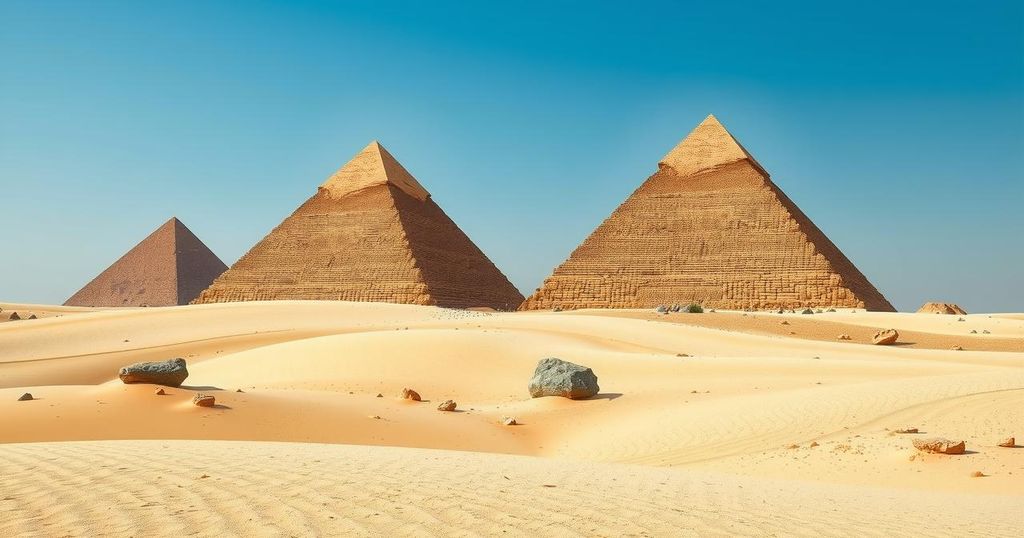Unveiling the Hidden Secrets Beneath the Giza Pyramids

Recent archaeological discoveries under the Giza Pyramids unveil a complex underground network, challenging traditional views of their purpose. Ground-penetrating radar and SAR technology reveal hidden structures and unexpected skeletal findings, suggesting a diverse workforce and potentially advanced technologies that could reshape historical narratives.
The Giza Pyramids, iconic symbols of ancient Egypt, may hold secrets that could significantly alter our understanding of history. Recent archaeological discoveries reveal the existence of mysterious underground structures and skeletons with unexpected origins, indicating that these pyramids might serve purposes beyond mere tombs. This suggests a broader narrative surrounding ancient Egypt that might reshape historical perspectives.
Investigations revealed enormous vertical cylindrical structures located 648 meters beneath the Giza Plateau. A research team including Corrado Malanga from the University of Pisa and Filippo Biondi from the University of Strathclyde utilized Synthetic Aperture Radar (SAR) to map this subterranean landscape. Their 2022 study uncovered hidden chambers within the Great Pyramid, and a March 15 press release highlighted further findings beneath the Khafre Pyramid, discovering five identical five-level structures and eight hollow spiraling wells linking to two large cube-shaped structures, forming a two-kilometer underground network under all pyramids.
Additionally, a survey between 2021-2023 using ground-penetrating radar identified an L-shaped structure at a depth of 6.5 feet, along with a potential chamber at depths of 10 to 33 feet. Researcher Motoyuki Sato from Tohoku University emphasized that such shapes could not occur through natural geological processes. This is further complicated by the 2023 Scan Pyramids discovery of a 30-foot corridor, hinting at a complex network of hidden features beneath the Giza Plateau.
In an intriguing turn of events, March 2025 discoveries unveiled skeletons tracing back to Nubia, south of Egypt, and dating to 3000 BCE. Osteologist Dr. Sarah Field noted that these findings challenge the traditional idea of a uniform workforce responsible for building the pyramids, suggesting a more diverse society than previously acknowledged. While traditional Egyptology portrays the pyramids as pharaohs’ tombs built around 2500 BCE, these new insights regarding advanced mathematics and engineering lead to imaginative theories.
Figures like Nikola Tesla believed the pyramids could have harnessed Earth’s energy, while Christopher Dunn posited the Great Pyramid might function as a power plant, converting vibrations into electricity. Meanwhile, Joseph Farrell speculated on its potential as a weapon utilizing ancient physics principles. The cylindrical wells discovered beneath the pyramids might have been designed to channel energy or sound, with the cube-shaped structures possibly acting as generators. Greg Reese reported that there is a push to excavate further to uncover these mysteries, yet obtaining necessary permits might prove difficult. Together with the diminishing Nile branch for stone transport, this evolving narrative of the pyramids resembles a sci-fi epic awaiting exploration.
Recent discoveries beneath the Giza Pyramids suggest they may not just be tombs but rather part of significant structures interconnected through an extensive underground network. Advances in radar technology have revealed previously unknown chambers and features, while skeletal findings imply a diverse workforce in their construction. These revelations challenge conventional views, hinting at a blend of historical significance and advanced ancient technology.
Original Source: www.marca.com






